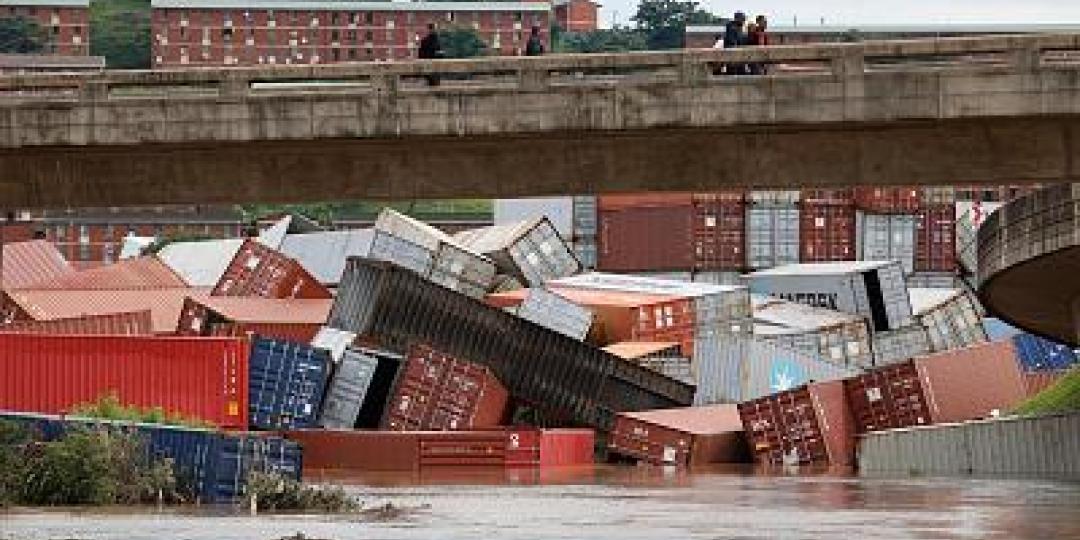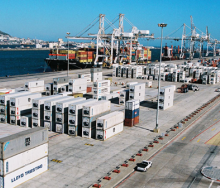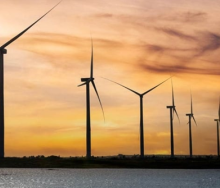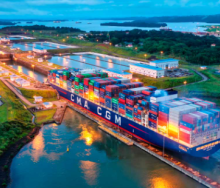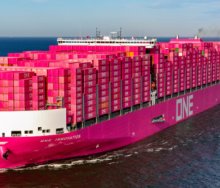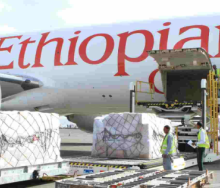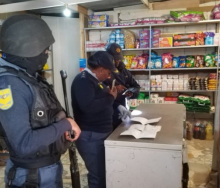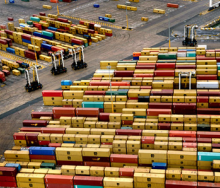Durban port will, within days, clear the backlog of thousands of containers that came to a grinding halt during the disastrous floods that lashed KwaZulu-Natal’s road, rail and port infrastructure last week.
Minister of Public Enterprises Pravin Gordhan assured businesses and local manufacturers during a joint media briefing with Minister of Trade, Industry and Competition, Ebrahim Patel, at the city’s port on Tuesday afternoon that the backlog of between 8000 and 9000 containers would be cleared within the next six days. He said the port had moved from the emergency phase of the recovery process and was now “fully operational”.
Gordhan attended an at least two-hour meeting with Transnet, Eskom and eThekwini Municipality officials at the port where he was briefed on the status of its business recovery plan.
He said between 40 and 60 ships had been serviced – loaded and offloaded – in the port since Saturday after a 72-hour clean-up operation to remove debris, including logs and appliances such as fridges that had washed into the port. Three rivers and at least 52 canals run into the port’s waters.
“That continues to improve with each day. Durban harbour is functional – ships bringing in imports are being serviced and ships taking out exports, food and fruit are being serviced,” he said.
“As a result of the impact on Bayhead Road, we had a situation where some 8000 to 9000 containers had accumulated because trucks could not reach the harbour area. Within the next six to eight days those containers will be cleared,” Gordhan said.
“The next work that is being done by the port authority is to ensure that the port remains in a state that it can be used. A dredger that was on its way to Cape Town is now on its way to Durban so it can clear the harbour.”
He said reinforcements had been placed in Bayhead Road which had been impacted by a 60m “crater”. This key port road was now accepting some truck and vehicle traffic, although a temporary route through the Bluff to Island View was also still in use, he said.
Gordhan estimated that extensive damage to Transnet’s rail network to Cato Ridge, which incurred the worst damage, and along the North and South Coast lines, would take from two to eight weeks to repair, depending on the severity of the damage to specific sections of track. He said the Transnet fuel line that transported fuel inland had been briefly impacted due to an electricity outage, however, it was operational within 24 hours and was currently working as normal.
“As far as fuel and KZN is concerned, there is no risk of fuel shortages and the pipeline is functioning as well,” he said.
Patel added that the government would be meeting with business leaders in the province to discuss the economic recovery plan. Businesses are concerned about interruptions to logistics services, the impact on their supply chain and manufacturing processes, and the physical damages caused to infrastructure which also impacts operations.
“The physical damage caused makes it difficult to continue operations for at least a period. eThekwini’s largest industrial plant, Toyota, has been severely affected in terms of the water damage caused and in terms of staff because of disruptions to transport systems, damage to homes, and loss of life.”
He added that there were also concerns regarding security, with many communities “feeling the pressure” to get basic supplies such as food and water.
